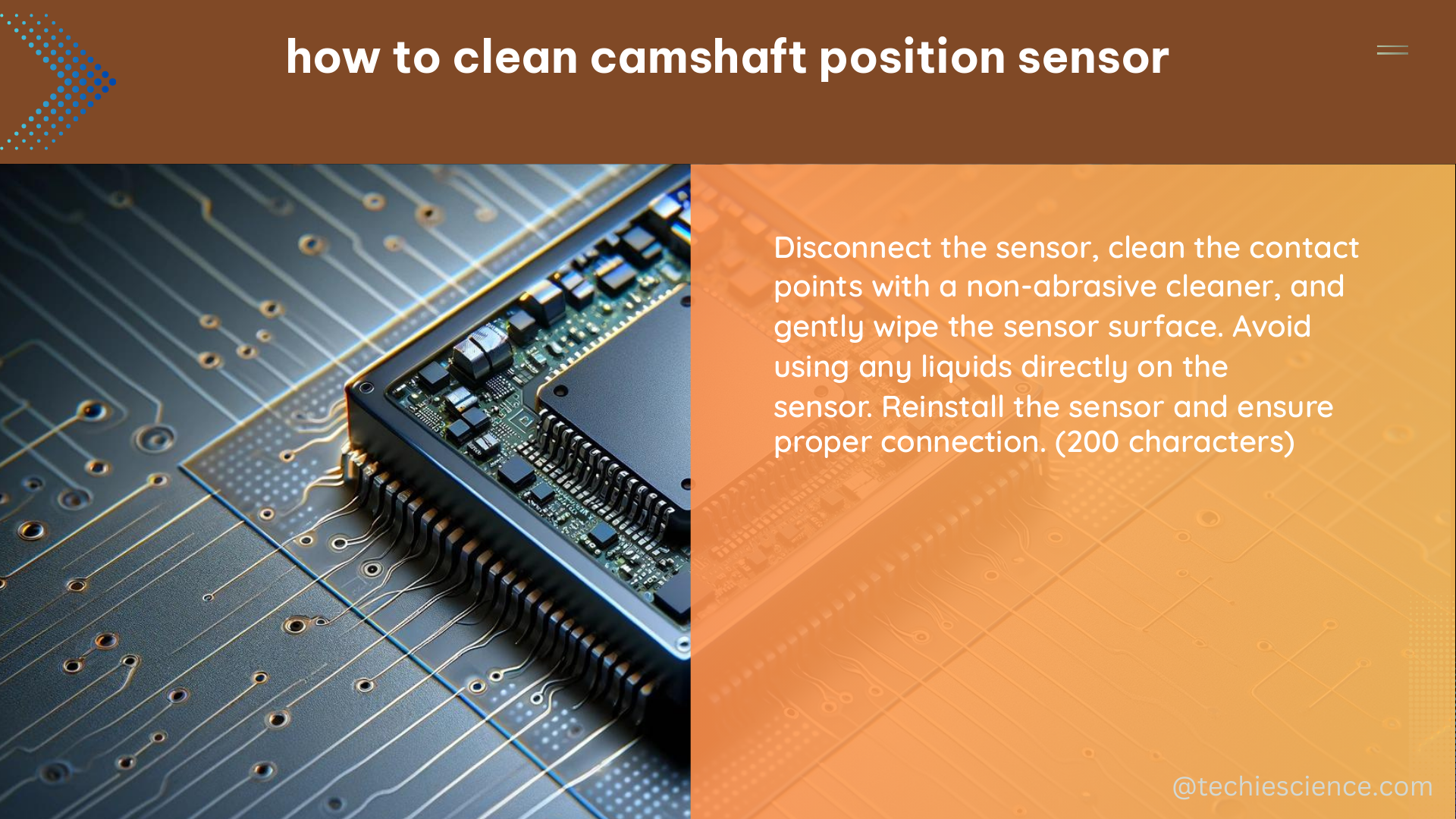The camshaft position sensor is a critical component in the engine management system, responsible for providing the engine control unit (ECU) with information about the position and timing of the camshaft. When this sensor becomes contaminated or malfunctions, it can lead to a range of issues, including poor engine performance, misfiring, and even engine stalling. In this comprehensive guide, we’ll walk you through the step-by-step process of cleaning a camshaft position sensor, ensuring your engine runs smoothly and efficiently.
Locating the Camshaft Position Sensor
The camshaft position sensor is typically located near the engine block, often near the crankshaft pulley or the timing cover. It is usually held in place by a single bolt, making it relatively easy to access and remove. However, the exact location may vary depending on the make and model of your vehicle, so it’s important to consult your owner’s manual or a repair manual for your specific vehicle.
Removing the Camshaft Position Sensor

- Disconnect the battery: Before you begin, it’s crucial to disconnect the negative battery terminal to prevent any electrical hazards or damage to the sensor or other components.
- Locate the sensor: Identify the camshaft position sensor and its mounting location, as described in the previous section.
- Unscrew the bolt: Using the appropriate socket or wrench, carefully unscrew the bolt that secures the sensor in place.
- Disconnect the sensor: Gently pull the sensor out of its housing, taking care not to damage the electrical connector or the sensor itself.
Cleaning the Camshaft Position Sensor
- Inspect the sensor: Carefully examine the sensor for any signs of damage, such as cracks, corrosion, or physical deformation. If the sensor is severely damaged, it may need to be replaced rather than cleaned.
- Clean the sensor: Use a clean, lint-free cloth or paper towel to wipe away any dirt, debris, or oil from the sensor. If the sensor is particularly dirty, you can use a mild solvent or brake cleaner to help remove the grime, but be sure to avoid getting any solvent or cleaner on the electrical contacts.
- Dry the sensor: After cleaning, use a clean, dry cloth or paper towel to thoroughly dry the sensor, ensuring that no moisture remains.
- Inspect the electrical contacts: Check the electrical contacts on the sensor for any signs of corrosion or damage. If the contacts are damaged, the sensor will need to be replaced.
Reinstalling the Camshaft Position Sensor
- Reinsert the sensor: Carefully reinsert the cleaned and dried sensor into its housing, ensuring that it is properly aligned and seated.
- Secure the sensor: Tighten the bolt that secures the sensor in place, taking care not to overtighten it.
- Reconnect the battery: Reconnect the negative battery terminal, ensuring that the connection is secure.
- Perform a test: Start the engine and observe the performance. If the engine runs smoothly and the check engine light is not illuminated, the sensor has been successfully cleaned and reinstalled.
Factors to Consider
When cleaning a camshaft position sensor, there are a few key factors to keep in mind:
- Safety: Always disconnect the battery before working on any electrical components, including sensors. This will help prevent accidental shorts or other electrical hazards.
- Cleanliness: Be sure to use clean, lint-free cloths or paper towels to avoid introducing any additional dirt or debris into the sensor.
- Care: Handle the sensor carefully to avoid damaging the electrical contacts or other sensitive components.
- Replacement: If the sensor is heavily contaminated or damaged, it may be more effective to replace it rather than trying to clean it.
Conclusion
Cleaning a camshaft position sensor is a straightforward process that can help restore your engine’s performance and prevent more serious issues. By following the steps outlined in this guide and taking the necessary precautions, you can effectively clean and maintain your camshaft position sensor, ensuring your vehicle runs smoothly and efficiently.
References
- How to Clean a Cam Shaft Position Sensor – Maxima Forums
- How to Clean Your Camshaft Sensors (Intake&Exhaust) DIY – YouTube
- How To Clean Camshaft Position Sensor: (5 Easy Steps) – YouTube

The lambdageeks.com Core SME Team is a group of experienced subject matter experts from diverse scientific and technical fields including Physics, Chemistry, Technology,Electronics & Electrical Engineering, Automotive, Mechanical Engineering. Our team collaborates to create high-quality, well-researched articles on a wide range of science and technology topics for the lambdageeks.com website.
All Our Senior SME are having more than 7 Years of experience in the respective fields . They are either Working Industry Professionals or assocaited With different Universities. Refer Our Authors Page to get to know About our Core SMEs.